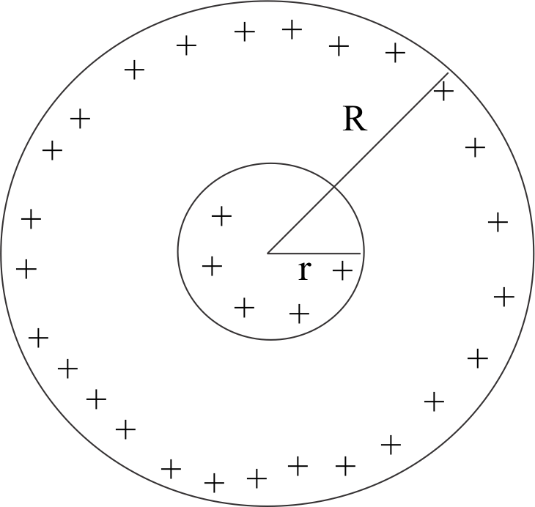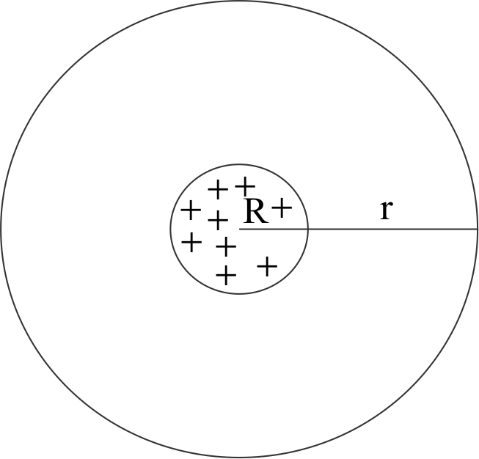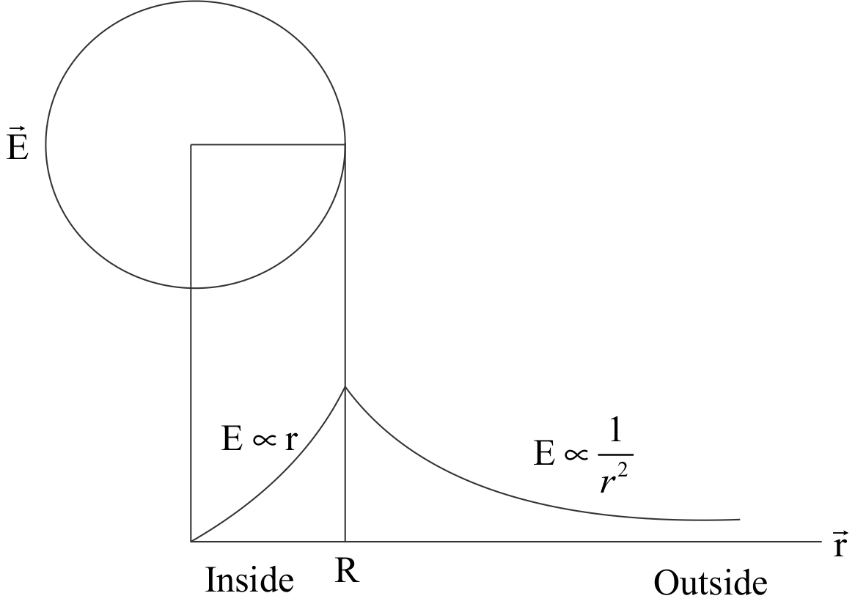
Electric field due to uniformly charged sphere.
Answer
146.7k+ views
1 likes
Hint: This is the case of solid non-conducting spheres. We will have three cases associated with it . They are : electric fields inside the sphere, on the surface, outside the sphere .
Apply the gauss theorem to find the electric field at the three different places.
Complete step by step solution:
Consider a charged solid sphere of radius
Also , electric flux=electric field X area of the enclosed surface :
Case I- Inside the sphere

The charge distribution is uniform . Volume density will be the same. Let the charge enclosed by a circle of radius
Applying Gauss Theorem here-
This is the electric field inside the charged sphere .
Case II: On the surface
In the above case we have calculated the electric field inside the sphere. In that formula we will put
This is the electric field on the surface.
Case III: Outside the sphere

We will apply Gauss theorem in this too.
This is the electric field outside the sphere.
If we plot these variations on a graph we will get the following graph:

Note: Since this is a solid sphere , it has charge inside it as well and that is why the electric field is non zero. In case of a hollow spherical shell, the electric field inside the shell is zero .
Apply the gauss theorem to find the electric field at the three different places.
Complete step by step solution:
Consider a charged solid sphere of radius
Also , electric flux=electric field X area of the enclosed surface :
Case I- Inside the sphere

The charge distribution is uniform . Volume density will be the same. Let the charge enclosed by a circle of radius
Applying Gauss Theorem here-
This is the electric field inside the charged sphere .
Case II: On the surface
In the above case we have calculated the electric field inside the sphere. In that formula we will put
This is the electric field on the surface.
Case III: Outside the sphere

We will apply Gauss theorem in this too.
This is the electric field outside the sphere.
If we plot these variations on a graph we will get the following graph:

Note: Since this is a solid sphere , it has charge inside it as well and that is why the electric field is non zero. In case of a hollow spherical shell, the electric field inside the shell is zero .
Recently Updated Pages
How to find Oxidation Number - Important Concepts for JEE

How Electromagnetic Waves are Formed - Important Concepts for JEE

Electrical Resistance - Important Concepts and Tips for JEE

Average Atomic Mass - Important Concepts and Tips for JEE

Chemical Equation - Important Concepts and Tips for JEE

Concept of CP and CV of Gas - Important Concepts and Tips for JEE

Trending doubts
JEE Main 2025 Session 2: Application Form (Out), Exam Dates (Released), Eligibility, & More

JEE Main Exam Marking Scheme: Detailed Breakdown of Marks and Negative Marking

JEE Main 2025: Derivation of Equation of Trajectory in Physics

Electric Field Due to Uniformly Charged Ring for JEE Main 2025 - Formula and Derivation

JEE Main Participating Colleges 2024 - A Complete List of Top Colleges

Degree of Dissociation and Its Formula With Solved Example for JEE

Other Pages
JEE Advanced Marks vs Ranks 2025: Understanding Category-wise Qualifying Marks and Previous Year Cut-offs

JEE Advanced 2025: Dates, Registration, Syllabus, Eligibility Criteria and More

JEE Advanced Weightage 2025 Chapter-Wise for Physics, Maths and Chemistry

Electric field due to uniformly charged sphere class 12 physics JEE_Main

Learn About Angle Of Deviation In Prism: JEE Main Physics 2025

Ideal and Non-Ideal Solutions Raoult's Law - JEE




